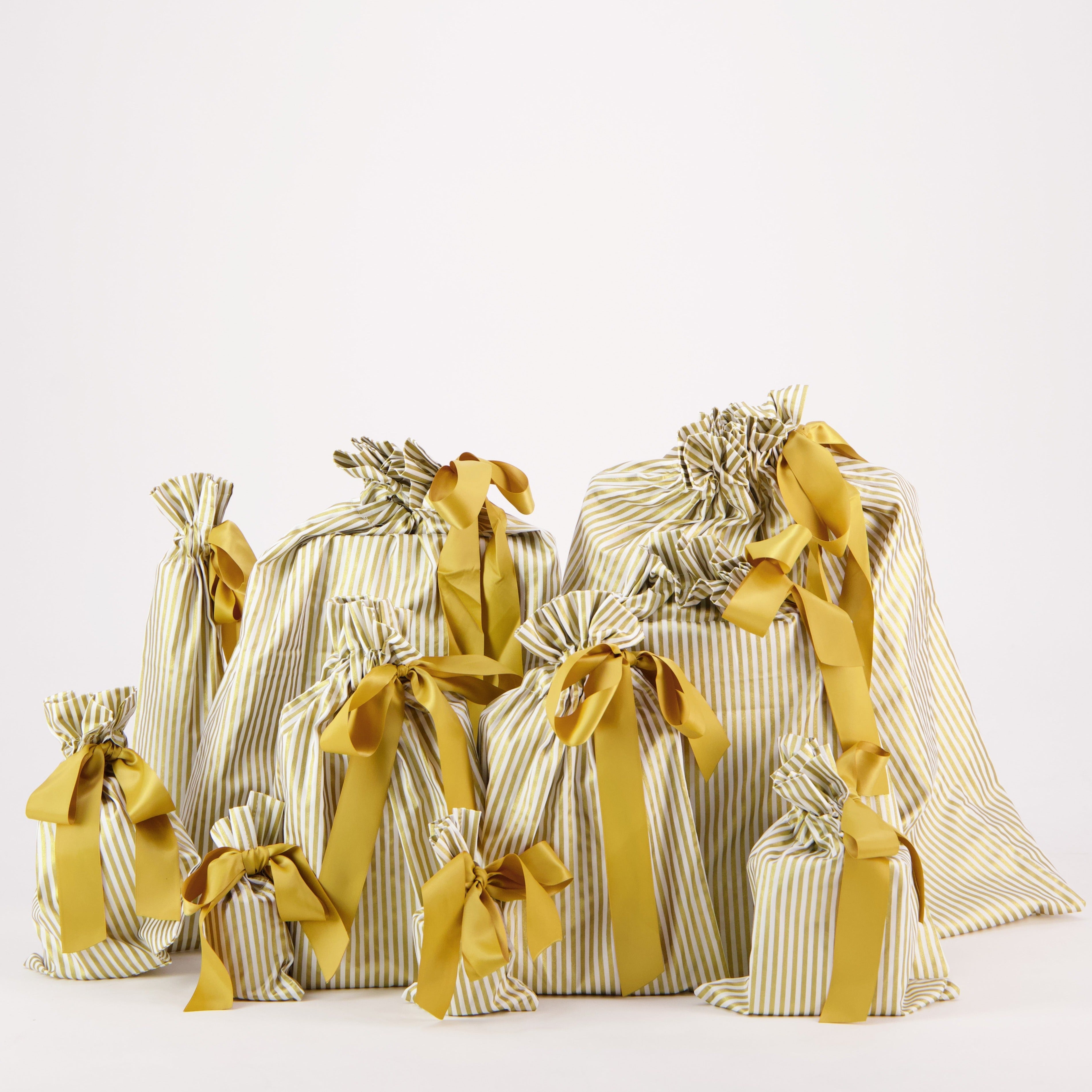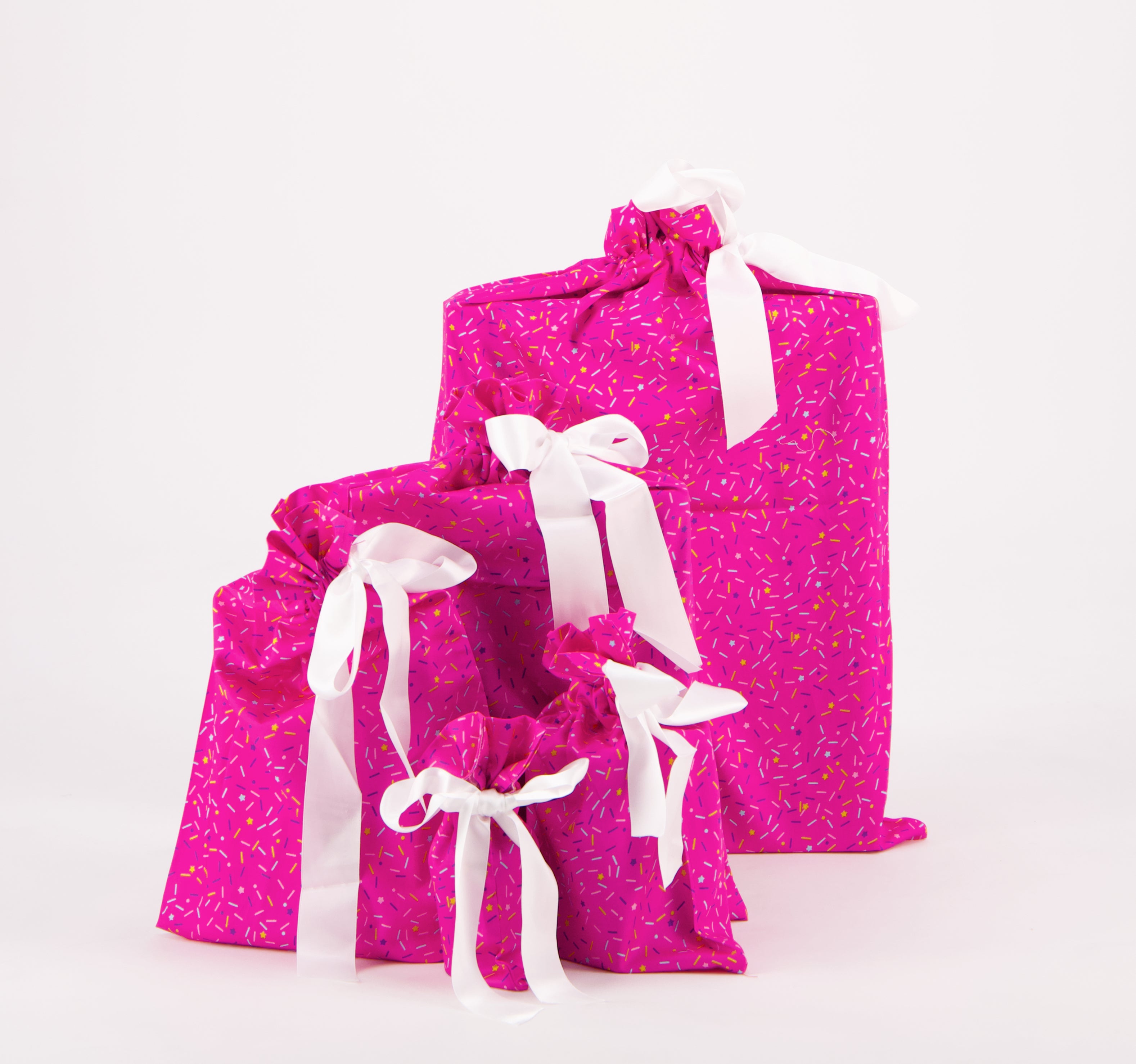
The Perils of Paper
It’s fair to say that by now the general population across most of the globe is well aware of the damage that plastic is doing to our environment -- particularly the 18 billion tonnes of plastic dumped into the oceans each year. I, for one, was quick to ditch plastics many years ago and reach for alternatives.
I am old enough to remember when I was a child in the late 70s when paper bags at supermarkets were replaced with plastic due to furore over depletion of the world’s forests to make paper bags. What we didn’t know at the time was that we were simply substituting one problem for another. As we now turn away from plastic, and back to paper, it seems we’re still doing the same thing.

To be fair, I run a company that was designed to remove waste from Christmas -- not just plastic but just the general mental detritus of Christmas morning with piles of wrapping paper, ribbons, sellotape, toy packaging, Christmas crackers and the crap that goes inside them. With five kids, the mess was doing my head in. I wasn’t making a war on wrapping paper as such, just the general “too muchness” of December 25.
I made my cotton reusable gift bags many years ago not as a cold shoulder to paper, but just a mess-avoidance tactic. So I was neck deep into waste-free Christmas strategies before I even looked at the perils of wrapping paper.
Firstly, a fair amount of wrapping paper is not recyclable -- it’s either plastic coated or too thin to have any fibres able to be reused. Any paper which has metallic or shiny designs is not recyclable at all and any paper that bounces back when you scrunch it is not recyclable. Secondly, paper which has not had the sticky tape removed can be very hard to recycle and often just sent to landfill instead. And let’s be real, how many people spend Christmas day laboriously removing all the tape from the paper to either use the paper again, or recycle it properly? (Ok, I know some of you are that person, but on the whole, you are rare).
So from a general mess and recycling point of view, wrapping paper was looking less attractive. But then, the environmental impact of paper hit me out of nowhere. According to a report by KPMG UK, paper is worse than plastic on almost all environmental criteria. Aside from being less dangerous to marine life than plastic, paper failed on all other fronts: consumption of non-renewable primary energy, consumption of water, climate change (emission of greenhouse gases), acid rain (atmospheric acidification), air quality (ground level ozone formation), eutrophication of water bodies, and solid waste production. On all these criteria, plastic scored better than paper.
What???????
Here is an excerpt from the report by KPMG UK, “To ban or not to ban The complex challenge posed by plastic and its alternatives”.
“Paper is the most common alternative to single-use plastic items, as seen in straws, cups and bags. This is because usually it can perform the same function as its plastic sibling without the harmful microplastics, chemical leaching and fumes released during burning, which plastic waste creates. Does this mean paper could be our answer to solving the plastic problem? No – not entirely as there are environmental trade-offs to take into account.
Research done by the Northern Ireland Assembly shows that it takes more than four times as much energy to manufacture a paper bag as it does a plastic bag. And during the production of a paper bag, trees – which would otherwise absorb greenhouse gases – need to be cut down to fuel this demand.
What’s more, most paper bags are made by heating chips of wood under high temperature and pressure within a chemical solution, inevitably resulting in the emission of greenhouse gasses. The toxic chemicals involved also contribute to water pollution – and cause a long-term problem as they work its way through the food chain.
Even more toxicity is created when paper bags degrade. Strikingly, paper bags generate 70% more air and 50 times more water pollutants than plastic bags. Then there’s the issue of the space they consume: around seven lorries would be needed to transport exactly the same number of paper bags as could be delivered by a single lorry carrying plastic bags.
Then there’s the fact that paper bags are almost never reusable and also tend to be very fragile. Plastic bags, on the other hand, can be very lightweight and yet still strong enough to carry a full load of shopping. A plastic bag can carry 2,500 times its own weight and stay strong when wet and also put to many other uses in the home. Reusable plastic bags (‘bags for life’) go even further, more sustainable than all types of lightweight plastic carrier bags if they are used at least four times. For that reason, some argue that they offer the best environmental benefits of all over the full life cycle.*
The Welsh Assembly Government studied the environmental impacts of different types of carrier bags. It concluded that, for a paper bag to match the environmental impacts of plastic bags, it would need to be used at least four times. However, most paper bags would not be durable enough to be used four times to test that theory.
Moreover, in terms of recycling, it takes 91% less energy to recycle a pound of plastic than it does to recycle a pound of paper.
It’s fair to say that there is no easy answer to the challenge plastics represent. Everything is a trade-off. Some of the alternatives may offer genuine improvements in some areas, but some give with one hand and take away with the other. A solution might, say, reduce the environmental impact in terms of greenhouse gas emissions, and yet involve the risk of serious pollution issues further down the line.”
*I note that the comparison here is only between plastic and paper bags and doesn’t include other options such as cotton or jute. So I looked up the Welsh Assembly Government paper and found some interesting data.

A plastic SUCB (Single Use Carrier Bag) has the least impact on CO2 and air quality (not mentioned in this table is that it has the worst impact on our oceans). A cotton bag, to the contrary is the worst. However, further along on the table you can see usage where cotton is used on average 125 times whereas SUCB and paper is used only twice. A comparison between wrapping paper and cotton reusable gift bags would presumably be even better as wrapping paper is rarely, if ever, used more than once whereas our gift bags at Waste Free Celebrations are designed to last generations. So here we land at the trade off just as we did in the 1970s when we traded paper for plastic… both have their problems so which one do you choose?
And just so you know I am not throwing stones at paper without examining cotton, I note, according to Nature.com.
“Textile production is one of the most polluting industries, producing 1.2 billion tonnes of CO2 equivalent (CO2e) per year, which is more emissions than international flights and maritime shipping. Over 60% of textiles are used in the clothing industry and a large proportions of clothing manufacturing occurs in China and India, countries which rely on coal-fuelled power plants, increasing the footprint of each garment. It has been stated that around 5% of total global emissions come from the fashion industry".
Emissions from manufacturing depend in part on the material produced. Synthetic fibres have seen rapid production growth since their introduction in the second half of the twentieth century. Polyester is now the most commonly used fabric in clothing, having overtaken cotton early in the twenty-first century. For polyester and other synthetic materials, the emissions for production are much higher as they are produced from fossil fuels such as crude oil. In 2015, production of polyester for textiles use results in more than 706 billion kg of CO2e. The authors estimate a single polyester t-shirt has emissions of 5.5 kg CO2e, compared with 2.1 kg CO2e for one made from cotton. However cotton is a thirsty crop and its production has greater impacts on land and water.”
Personally, I do not confuse the cotton I use here at WFC with the horrific waste in the fast fashion industry as a) fast fashion is overwhelmingly polyester-based as as pointed out above, creates around 2.5 times the amount of CO2 than cotton; b) fast fashion by its nature is not reusable and not designed to be worn for decades on end. Our bags, however, are.
So how do we decide?
For me, I choose cotton because I love what reusable means to consumerism: reusable fabric gift bags are designed to reduce the cycle of endless consumption… always buying, always getting the next best thing. Reusable means being part of the circular economy; it means making do with what we have and reusing it until it dies. Pure cotton also poses the least threat to marine life. I am well aware it comes with problems of its own however, as nature.com points out in the same article above, long-wearing, durable, high-quality cotton products are a solution. Buy it once, wear it forever -- or in the case of reusable cotton gift bags, gift it forever. Whether you use plastic or paper or cotton, the key is reusing it, and to reuse it for as many years as possible.
Thankfully, I think we’re on the right track here at Waste Free Celebrations.
---------------------
Here are links to the articles I have referenced above.
https://home.kpmg/content/dam/kpmg/uk/pdf/2019/06/to-ban-or-not-to-ban-v6.pdf











